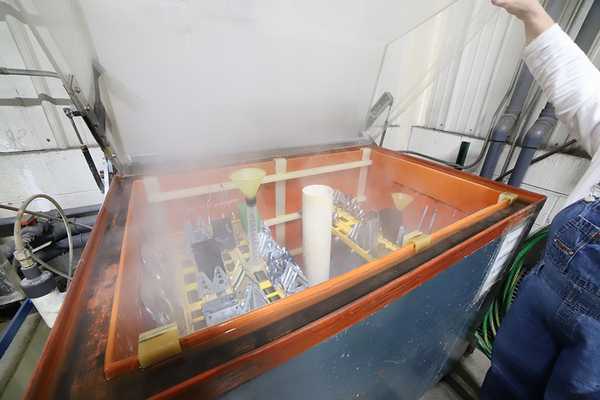
NewsInformation Center
ASTM B117-19: Standard Practice for Operating Salt Spray Tester
2023/11/08
ASTM B117-19 is a standard practice developed by ASTM International (formerly known as the American Society for Testing and Materials) for operating a salt spray tester. A salt spray tester is used to simulate and evaluate the corrosive effects of salt spray on various materials, coatings, and finishes.
ASTM B117-19: Standard Practice for Operating Salt Spray (Mist) Devices provides guidelines for devices that help identify corrosion resistance information.
What is Corrosion?
Corrosion is the decay of a material due to a chemical reaction with its environment. Total corrosion occurs when a large number of atoms on the surface of a metal are oxidized. The most common product of iron corrosion is rust.
What are the effects of corrosion?
Corrosion can jeopardize human life. Many tragedies have occurred due to corrosion. For example, in 2017, a ride at the Ohio State Fair collapsed, killing one person and injuring seven others. The manufacturer cited corrosion as the reason for the ride's failure.In 1983, the Mianus River Bridge collapsed, killing three people and seriously injuring many others. The bridge was only 25 years old at the time. An investigation found corroded support pins on the bridge.
The cost of corrosion can also be high. a study conducted by NACE International from 1999 to 2001 found that corrosion directly causes $276 billion in damage annually. This, of course, does not take into account the indirect costs of corrosion. According to the same NACE study, a conservative estimate of indirect costs totaled $552 billion. Clearly, corrosion needs to be considered.
What is the standard practice for operating a salt spray (fog) unit?
ASTM B117-19 covers equipment, procedures, and guidelines for creating and maintaining salt spray (fog) test environments. Notably, the standard does not prescribe interpretation of results. It also does not specify exposure times to be used for specific products or types of test specimens.
ASTM B117-19 provides a controlled corrosion environment that can be used to collect information on the relative corrosion resistance of metal samples and coated metals exposed in a stationary test chamber.
Documents referenced in ASTM B117-19 include:
ASTM B368: Test Method for Copper Accelerated Acetate Spray (Mist) Test (CASS Test)
ASTM D609: Preparation Practices for Cold Rolled Steel Sheets for Testing Paint, Varnish, Conversion Coatings, and Related Coated Products
ASTM D1193: Specification for Reagent Water
ASTM D1654: Test Method for Evaluating Painted or Coated Samples Subjected to Corrosive Environments
ASTM E70: Method for Testing the pH of Aqueous Solutions Using Glass Electrodes
ASTM E691: Practice for Conducting Interlaboratory Studies to Determine the Accuracy of Test Methods G85 Modified Salt Spray (Mist) Test Practice
ASTM G85-19: Standard Practice for Modified Salt Spray (Mist) Testing
ASTM B117-19: Standard Practice for Operating Salt Mist (Fog) Apparatus is available at the ANSI Online Store.
More information about ASTM B117-19: Standard Practice for Operating Salt Spray (Fog) Devices is available by sending us a message.
Previous: Common mistakes to avoid when testing masks for flame retardancy
N e x t : What is the ASTM E84 code?




